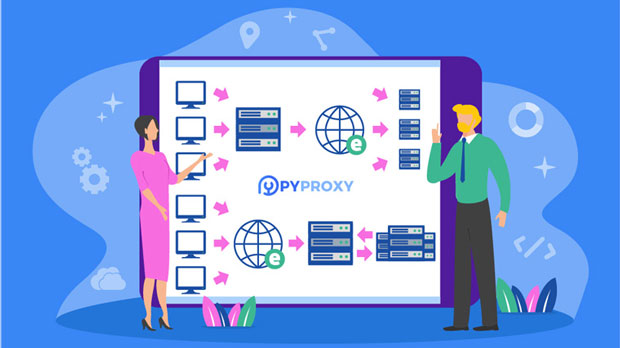Why are SOCKS5 proxies more advanced than SOCKS4?
In the world of network security and anonymity, proxies play a crucial role in protecting user identity and data. Among the various types of proxies, SOCKS4 and SOCKS5 are the most widely used. While both offer a way to route traffic through a third-party server to mask the user's IP address, SOCKS5 provides several advancements that make it a more powerful and versatile choice. This article will explore why SOCKS5 is considered more advanced than SOCKS4, focusing on improvements in security, performance, and flexibility. Understanding SOCKS ProtocolsBefore diving into the differences, it is important to understand what SOCKS protocols are and how they function. SOCKS, which stands for “Socket Secure,” is a network protocol that facilitates data transmission between a client and a server via a proxy server. The proxy server acts as an intermediary, forwarding requests from the client to the destination server and vice versa. SOCKS4 and SOCKS5 are different versions of this protocol, each with its own capabilities and limitations.1. Enhanced Security with SOCKS5One of the primary reasons SOCKS5 is considered more advanced than SOCKS4 is the added security features. SOCKS5 supports more sophisticated authentication methods, including the use of usernames and passwords for verification. This provides an extra layer of protection, ensuring that only authorized users can access the proxy server.In contrast, SOCKS4 offers a more basic form of security, with no built-in authentication mechanism. This means that anyone who can access a SOCKS4 server could use it, potentially putting user data and network security at risk. The ability to authenticate users with SOCKS5 helps mitigate these risks, making it a safer choice for sensitive applications.2. Support for IPv6Another major improvement in SOCKS5 over SOCKS4 is its support for IPv6 addresses. IPv6, the latest version of the Internet Protocol, is rapidly replacing IPv4 due to the exhaustion of available IPv4 addresses. SOCKS4, however, only supports IPv4, which limits its compatibility with modern networks and devices.SOCKS5, on the other hand, is fully compatible with both IPv4 and IPv6, allowing it to work seamlessly with the latest Internet infrastructure. This makes SOCKS5 more future-proof, as it can handle the growing number of devices and networks that rely on IPv6 addresses.3. Improved Performance with SOCKS5SOCKS5 also outperforms SOCKS4 when it comes to speed and efficiency. One of the key reasons for this is the protocol’s ability to handle a wider range of traffic types, including UDP (User Datagram Protocol) traffic. SOCKS4, in contrast, only supports TCP (Transmission Control Protocol) traffic, which can limit its performance in certain scenarios.UDP is a connectionless protocol that is often used in real-time applications, such as video streaming, online gaming, and VoIP (Voice over Internet Protocol). By supporting UDP, SOCKS5 can provide a faster and more reliable connection for these types of services, making it a better option for users who require low-latency performance.4. Flexibility and CompatibilitySOCKS5 offers greater flexibility than SOCKS4 in terms of compatibility with different types of applications and services. While SOCKS4 is primarily used for web browsing and simple data transfer, SOCKS5 can support a wider variety of network protocols and services. This makes it a more versatile option for users who need to route traffic from multiple applications through a proxy server.Additionally, SOCKS5 allows for more granular control over the traffic that is routed through the proxy. This includes the ability to selectively route specific applications or services through the proxy, which can help optimize network performance and security. In contrast, SOCKS4 does not provide this level of control, making it less flexible for complex use cases.5. Better Handling of Firewall and NAT TraversalOne of the challenges faced by proxy servers is their ability to handle firewalls and NAT (Network Address Translation) devices. These devices can block or interfere with proxy traffic, making it difficult for users to connect to the server. SOCKS5 improves upon SOCKS4 by offering better handling of firewalls and NAT traversal.SOCKS5 supports a feature called “authentication with a handshake,” which helps it bypass firewalls and NAT devices more effectively. This allows users to establish a more stable and reliable connection, even in environments where network security devices are present. SOCKS4, by contrast, struggles to handle such situations, which can result in slower connections or failed attempts to access certain services.6. Enhanced Proxy CapabilitiesSOCKS5 also provides more advanced proxy capabilities than SOCKS4. For example, SOCKS5 allows for “proxy chaining,” where multiple proxies can be used in sequence to further anonymize the user’s connection. This adds another layer of privacy and security, making it much more difficult for anyone to trace the user’s activities back to their original IP address.Additionally, SOCKS5 supports both UDP and TCP traffic, as mentioned earlier, which allows it to handle a wider range of applications. SOCKS4, by contrast, only supports TCP traffic, limiting its ability to work with applications that rely on UDP.Conclusion: Why Choose SOCKS5 Over SOCKS4?In summary, SOCKS5 is a clear advancement over SOCKS4 due to its enhanced security features, support for IPv6, improved performance, greater flexibility, and better handling of firewalls and NAT traversal. For users who require a more secure, reliable, and versatile proxy solution, SOCKS5 is the preferred choice. Whether for browsing, streaming, gaming, or secure communications, SOCKS5 provides a comprehensive solution that meets the demands of modern internet users.While SOCKS4 may still be suitable for basic tasks, its limitations in terms of security, performance, and compatibility make it less ideal for users who need a more robust proxy solution. As the internet continues to evolve, SOCKS5 will remain the superior choice for those looking for a fast, secure, and flexible way to route their internet traffic.
2025-01-28

























































